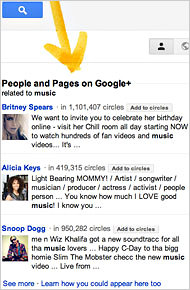Microsoft announced on Monday that it will buy Yammer, a social network service for businesses, for $1.2 billion in cash, as it seeks to strengthen its enterprise software business and compete more directly with Salesforce.com.
Under the terms of the expected deal, Yammer will be added to Microsoft’s office division and will continue to be led by David Sacks, its chief executive.
Yammer, which calls itself “the enterprise social network,” is a sort of Facebook for business. Its Web-based service allows companies to create private social networks, where employees can privately chat, shares files and collaborate on projects.
“The acquisition of Yammer underscores our commitment to deliver technology that businesses need and people love,” Steve Ballmer, Microsoft’s chief executive, said in a statement. “Yammer adds a best-in-class enterprise social networking service to Microsoft’s growing portfolio of complementary cloud services.”
It was co-founded in 2008 by Mr. Sacks, a former PayPal executive who spun the business out of Geni, a genealogy and social networking site.
Over the past four years, the service has grown at a rapid clip, as more companies turn to the Web for secure solutions to enhance inter-office communication and collaboration. Yammer, which offers both free and subscription services, has more than five million users and is used by more than 85 percent of Fortune 500 companies.
It has raised a total of $142 million in venture capital, recently adding $85 million in late February, in a financing round led by Draper Fisher Jurvetson. The company’s roster of investors and board members is stacked with former Facebook executives and members of the so-called PayPal mafia. Founders Fund, the venture firm led by PayPal cofounder Peter Thiel, and Social+Capital, a firm partially backed by Facebook, are both major backers. Sean Parker, the former president of Facebook and an executive general partner at Founders Fund, is a board member.
The marriage of Yammer and Microsoft which also invested in Facebook — makes sense, given the importance of the enterprise consumer to Microsoft and recent moves by Yammer to align itself closer to the software giant. In April, Yammer acquired oneDrum, a British start-up focused on file sharing and enterprise collaboration solutions, for an undisclosed sum.
“When we started Yammer four years ago, we set out to do something big,” Mr. Sacks said in a statement. “We had a vision for how social networking could change the way we work. Joining Microsoft will accelerate that vision and give us access to the technologies, expertise and resources we’ll need to scale and innovate.”
Microsoft’s pursuit of Yammer comes as the enterprise market converges with the consumer Web. Traditionally, a company’s technology purchasing decisions were made top-down, controlled by a handful of information technology experts. That model is rapidly eroding with the rise of Web-based services that are created to be lightweight and user-friendly. Start-ups like Yammer reel in consumers with free versions. Those consumers then become evangelists at their companies, encouraging their employers to adopt the application and pay for a premium subscription.
A Yammer acquisition will allow Microsoft to compete more directly with Salesforce, which offers a similar messaging product called Chatter. Salesforce has also been aggressive in adding social-related applications to its portfolio, recently spending $689 million for BuddyMedia, a social marketing business that works with companies like Ford Motor and L’Oreal. The service helps companies build and manage their advertising campaigns across social networking sites, like Twitter and Facebook.
Article source: http://dealbook.nytimes.com/2012/06/25/microsoft-to-buy-yammer-for-1-2-billion/?partner=rss&emc=rss
